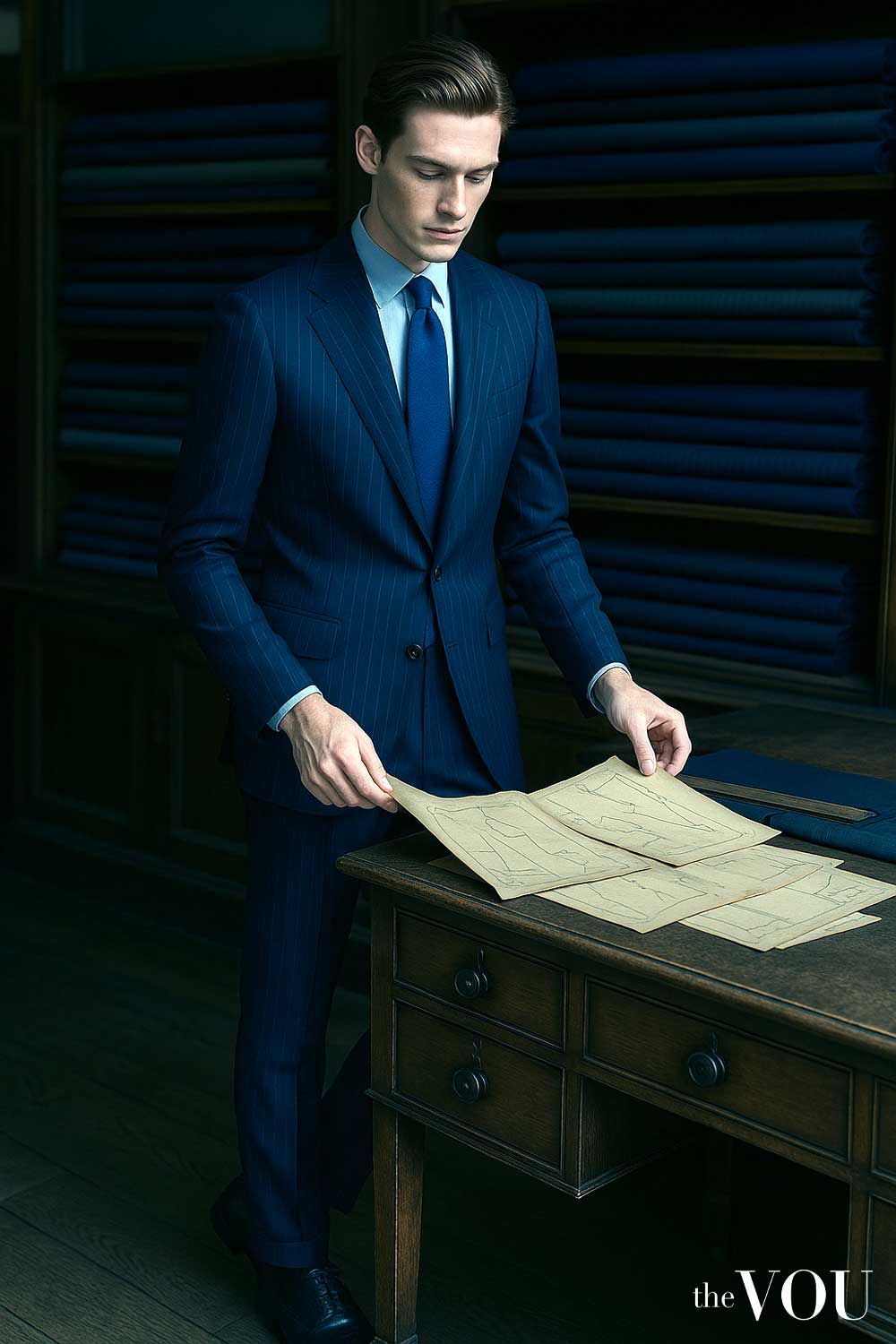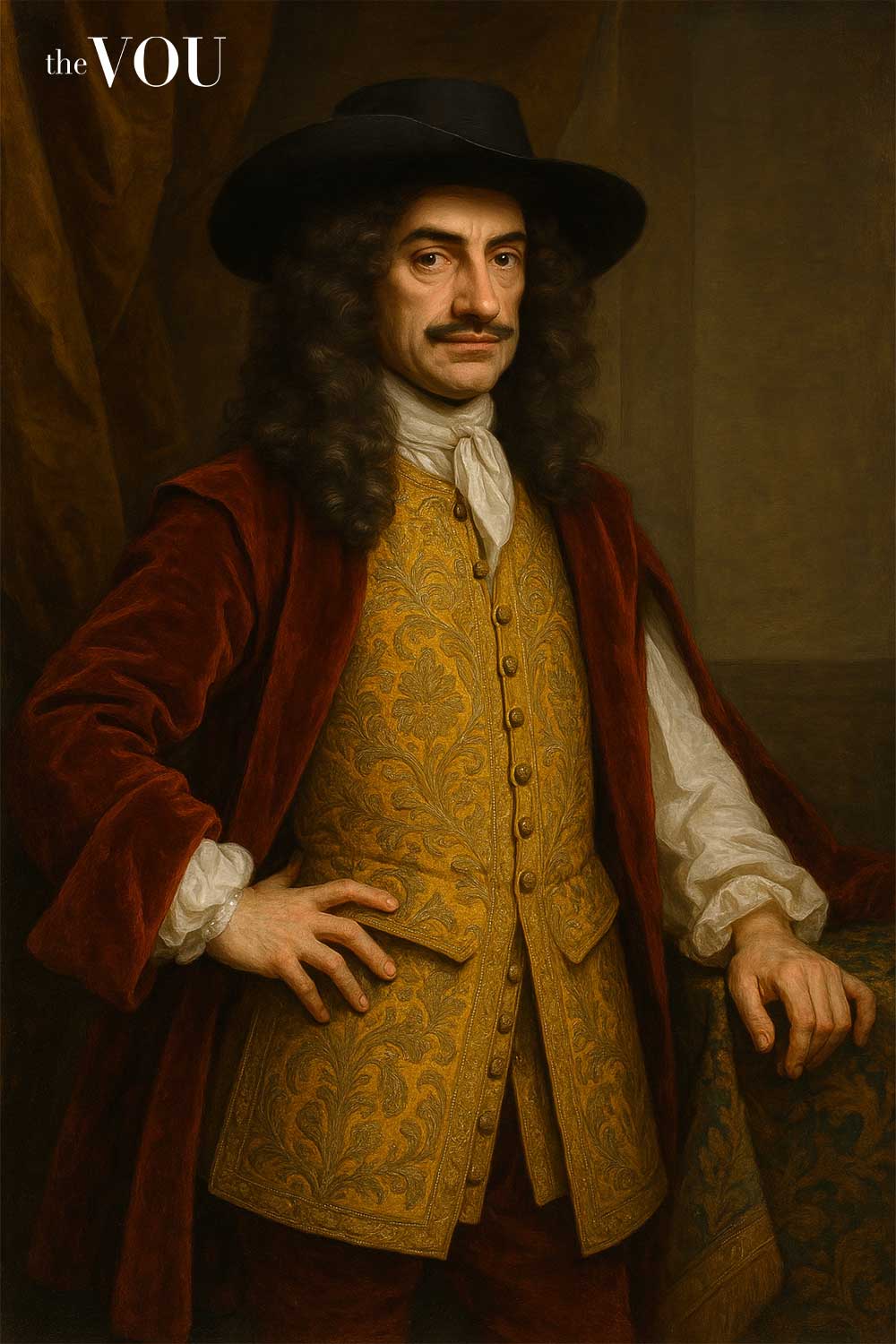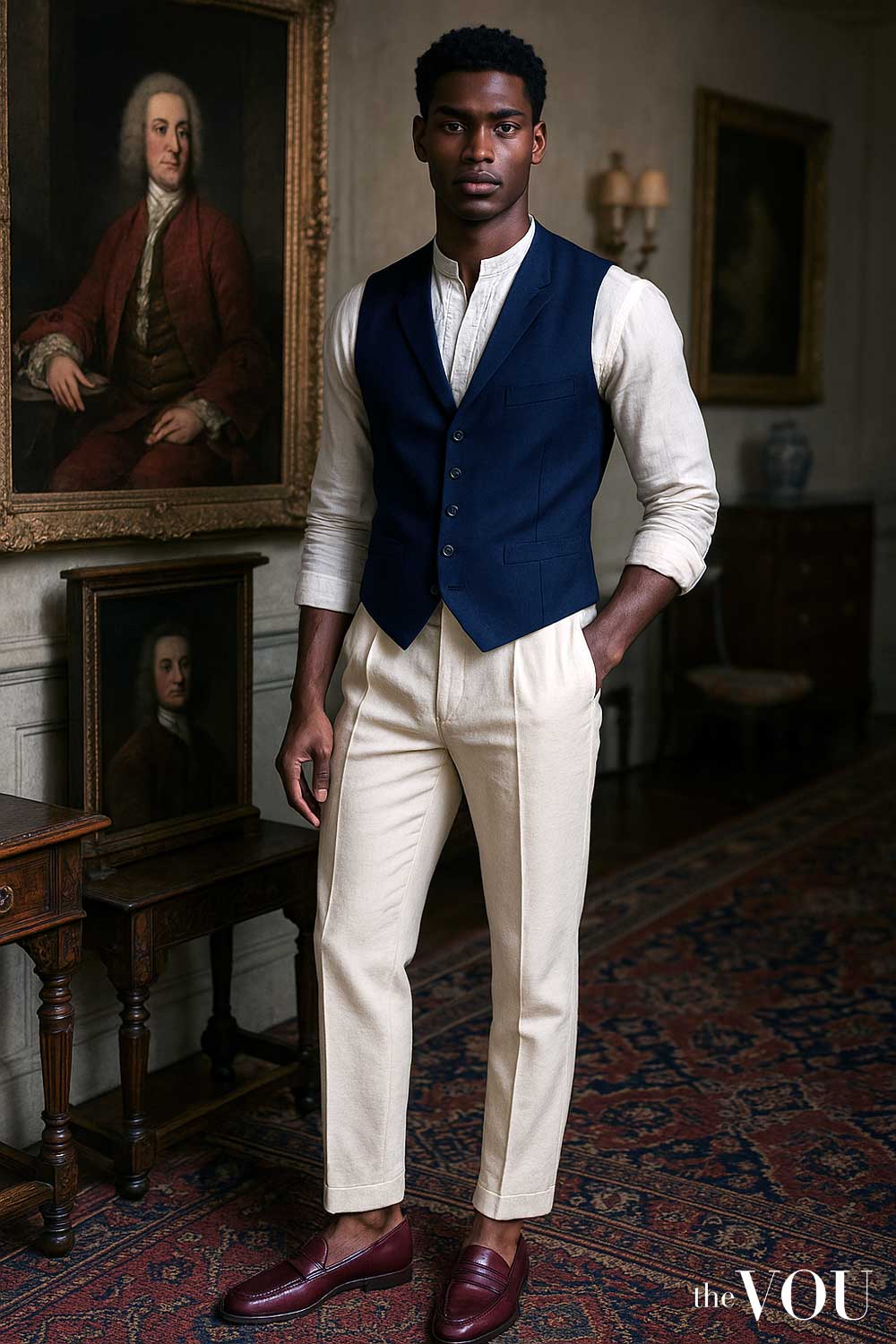A cornerstone of the male wardrobe for generations, the suit’s relevance is increasingly questioned in an age of streetwear, casual dress codes, and fast-changing fashion trends.
Some dismiss the suit as an anachronistic relic of corporate conformity, while others consider it an unnecessary expense. Thus, the suit risks being relegated to the fringes of contemporary menswear.

However, to perceive the suit solely through the lens of restriction or obsolescence is to fundamentally misunderstand its profound historical, psychological, and communicative power.
In this article, we show that far from being a sartorial straitjacket, the suit remains a potent and versatile garment, offering modern men a unique form of agency and intentionality in presenting themselves to the world.

Drawing upon historical analysis, sociological insights, and a re-evaluation of contemporary dress, we will explore why owning a suit in the 21st century is not merely about adhering to tradition but about strategically wearing a garment that showcases status and commands respect.
The Suit’s Story – More Than a Uniform
The suit, routinely dismissed as a boring uniform, carries a surprisingly rich and dynamic history.
To view it as merely a symbol of conformity ignores its fascinating evolution, diverse uses, and inherent power.
The suit is not static; it has constantly adapted, shaped by social forces and individual expression, with origins more exotic than most men realize.
The Birth of the Suit – From Persia to Pall Mall
The modern three-piece suit’s lineage goes back to 1666, when King Charles II of England adopted a Persian-inspired vest.

This was no mere fashion whim. In the mid-17th century, English clothing was in flux, influenced by the loose, flamboyant styles of the French court.
Charles, seeking to establish a distinctly English sartorial identity and project an image of authority, embraced the closer-fitting, more structured vest.

Samuel Pepys, the diarist, enthusiastically recorded the King’s new garment as “a long cassock close to the body… a very fine and handsome garment.”
This marked a deliberate break from prevailing fashion and the birth of a distinctly English style, rooted in a surprising nod to Oriental influence.
Shaping the Suit’s Form with… Military Precision
The rise of military uniforms significantly impacted the suit’s development – 17th and 18th-century warfare demanded coordinated troops, necessitating standardised military dress.

Uniforms instilled discipline and projected power, and the iconic red coats of the British Army became synonymous with authority and inspired civilian adaptations.
This emphasis on uniformity, born from battlefield necessity, resonated with broader societal trends towards order and efficiency.

Military tailoring principles – structure, precise fit, functional design – seeped into civilian menswear, and the suit inherited this legacy of precision and disciplined presentation.
The Plain Revolution – Morality and the Modern Suit
Beyond military influence, religious movements shaped the suit’s character.
Quakers and Methodists, advocating plain dress, championed simplicity and functionality over ornamentation.
John Wesley, the founder of Methodism, explicitly advised against “glaring colour” and “showy” attire.
This Nonconformist ethos of understated virtue contributed to the suit’s association with respectability and moral seriousness.
The dark palette and unadorned style, characteristic of the modern suit, owe a debt to this “plain revolution.”
This was not about drabness, but conveying seriousness of purpose and inner character through clothing.
The 19th Century – The Rise of the Professional Suit
The 19th century cemented the suit’s place as the uniform of the burgeoning professional class.
Industrialisation and expanding empires demanded a new class of administrators, businessmen, and professionals.
The suit became their visual shorthand. In Victorian England, the dark suit, black, became associated with urban life, business, and a certain somber respectability.
Think of Charles Dickens’ London, a city of “sombre” wealth where men in black suits navigated the complexities of commerce and empire.
Savile Row tailors perfected the art of crafting suits that were not just garments but signifiers of social standing and professional success.
The suit became the definitive dress of power and authority in the modern age.
The Suit’s Psychological Edge – Dress for Success
Beyond its history, the suit possesses a remarkable psychological power.
Wearing a suit is not merely about adhering to dress codes; it’s about tapping into a garment that fundamentally alters self-perception and commands attention.
This psychological dimension is key to understanding the suit’s enduring appeal.
How Suits Change the Way You Think and Act
Science backs up what many instinctively know: clothes change how you think and act.
“Enclothed cognition,” a psychological theory, explains this phenomenon.
Clothing directly influences cognitive processes and behavior. Don a suit, and you subtly shift your mindset.
Studies show that individuals in formal attire exhibit increased abstract thinking and boosted feelings of power.
The suit isn’t just fabric; it’s a psychological tool. Think of actors like Daniel Craig as James Bond.
In his impeccably tailored suits, he embodies confidence and suave sophistication. The clothing reinforces his persona, both for him and the audience.
Intentionality and Command – Take Control of Your Image
Unlike casual dressing, selecting a suit signals intentionality, so it is rarely accidental but a deliberate act of self-presentation.
You’re consciously deciding how to appear, what message to send, and this act of control is empowering, allowing you to shape your image and influence perception.
For example, George Clooney, known for his classic, timeless style – understands the power of intentional dressing – as he’s always in suits that project sophistication and authority.
Confidence Boost – Stand Taller, Speak Louder
A well-fitting suit doesn’t just look good; it ‘feels’ good. It improves posture, sharpens body language, and projects self-assurance.
The structured silhouette, the tailored fit, the quality fabric – these details create a sense of polish and preparedness.
This feeling translates directly into confidence. Imagine athletes arriving at a major sporting event.
While their sportswear defines their profession, many choose suits for press conferences or formal occasions – ex: LeBron James wears suits to project leadership and gravitas off the court.
The suit becomes a visual representation of their professional stature, boosting their confidence in those settings.
Authenticity, Not Artifice – Amplify Your Strengths
The suit’s power isn’t about masking insecurity or creating a false front. It’s about amplifying genuine qualities.
A suit worn with confidence and purpose becomes an extension of personality, not a disguise. It enhances presence, reinforcing your message.
Think of Ryan Reynolds – whether in sharp, modern suits for red carpets or more relaxed tailoring for business ventures, he projects a consistent image of witty confidence.
The suit ‘works’ with his personality, not against it. It’s about authentic self-expression, amplified by sartorial choice.
Wear Suits to Communicate Respect and Command
Clothing is a language, and the suit is one of its most articulate dialects. More than just personal style, a suit communicates respect, understanding of context, and a commitment to professionalism.
In an era where dress codes blur, the suit retains its powerful ability to send clear, impactful messages.
Show You Understand the Occasion
A suit immediately conveys respect – for the event, the people you meet, and established social norms.
Wearing a suit to a job interview, a critical business meeting, or a formal event signals that you grasp the importance of the situation and have made a conscious effort to present yourself accordingly.
This sartorial choice demonstrates consideration, not subservience, acknowledging shared dress codes as a social contract, leading to smoother interactions and mutual regard.
Think of world leaders meeting for crucial summits. While the specific style of suit may vary, the consistent choice of formal tailoring underscores the gravity of the occasion and the respect each leader accords to the proceedings.
Avoid Sartorial Ambiguity
Contrast the clear message of a suit with the often-confusing “smart-casual” dress code. While intended to be flexible, “smart-casual” is subjective and easily misinterpreted.
What one person deems “smart,” another might see as “casual,” creating uncertainty and potential missteps. The suit eliminates this ambiguity. It provides a universally understood signal of formality and professionalism.
Its inherent structure and established conventions offer a reliable framework for navigating dress expectations, minimizing any risk of sartorial errors.
Imagine attending a business conference. In a sea of potentially ambiguous “smart-casual,” a well-chosen suit ensures you project clarity and professionalism from the moment you enter the room.
Adapting the Suit’s Message to the Context
The suit’s versatility lies in its adaptability to different contexts. The style, fabric, and color can be adjusted to communicate specific messages appropriate for various situations. A dark navy suit in a boardroom projects authority and gravitas.
A lighter grey suit in a creative industry might suggest approachability and modern style. A subtly patterned suit for a social event can convey personality while maintaining decorum.
This nuanced flexibility makes the suit a powerful communication tool adaptable to various professional and social settings.
Consider actors on a press tour. For formal premieres, they might opt for classic black tie.
For daytime interviews, they might choose more relaxed but still tailored suits in lighter colors and fabrics, adapting their sartorial message to the specific context.
Suits to Signal You’re Ready for Business
A suit communicates preparedness. It suggests the wearer is ready to engage seriously, whether in a high-stakes negotiation or a significant life event.
This sense of readiness is not just external; it’s internally reinforcing.
The act of dressing in a suit can mentally prepare you, sharpening focus and instilling purpose. Think of lawyers entering a courtroom.
Their suits are not merely tradition; they visually reinforce their professional role and project an image of preparedness and authority crucial for their function.
The suit becomes a tool for both outward communication and inward focus, enhancing performance and projecting competence.
Standing Out by Standing Apart in an Informal World
In an increasingly informal world, wearing a suit is a deliberate act of differentiation.
It sets you apart, signaling a commitment to higher standards, attention to detail, and a willingness to exceed expectations.
This sartorial distinction can be invaluable in competitive environments, projecting an image of confidence, competence, and unwavering professionalism.
Imagine a crowded networking event where most attendees are casually dressed. An individual in a well-cut suit immediately commands attention and respect, visually distinguishing themselves and signaling a different level of seriousness and intent.
Modern Men’s Suit Style – Breaking the Uniform Mold
The outdated image of the suit as a stiff, uncomfortable, and monotonous uniform no longer holds true.
Today’s tailoring embraces innovation, resulting in suits that are not only stylish but remarkably comfortable and adaptable.
The modern suit is far from restrictive; it’s a dynamic garment suited to diverse lifestyles and individual tastes.
New Fabrics for Comfort and Style
Material innovation has transformed the suit. Lightweight wools, breathable linen and cotton blends, and even performance fabrics now define contemporary tailoring.
These advancements create suits that are comfortable in varied climates, move with you, and resist wrinkles.
The stereotype of the suit as stuffy and impractical is simply obsolete. Consider the travel suit, a modern invention.
Often crafted from high-performance fabrics, these suits are designed for mobility and resilience.
They are favored by busy professionals and exemplified by figures like Ryan Reynolds, who frequently sports impeccably tailored yet clearly comfortable suits while traveling the globe for his film projects.
Style Suits for Every Silhouette and Taste
Modern suit styles offer unprecedented variety. From slim-fit, Italian-inspired cuts to relaxed, contemporary silhouettes, a suit exists for every body type and personal style. The rise of suit separates further expands options.
Mixing and matching jackets and trousers allows for customized ensembles blurring the lines between formal and informal.
The modern suit is not a rigid template, but a flexible system adaptable to individual expression.
Look at someone like David Beckham. He effortlessly transitions between sharply tailored classic suits and more relaxed, unstructured styles, demonstrating the breadth of the modern suit’s stylistic range and personal adaptability.
Dressing with Confidence – Beyond Formalwear
The concept of “dressing down” a suit showcases its versatility. Pairing a suit jacket with chinos or jeans, or swapping a dress shirt for a roll-neck jumper, are now accepted and stylish ways to incorporate tailoring into less formal settings.
This ability to be dressed up or down dramatically broadens the suit’s relevance, extending its reach beyond strictly formal occasions.
Think of contemporary musicians and artists like Harry Styles, who confidently blend tailoring with casual elements.
He might pair a boldly patterned suit with a simple t-shirt or sneakers, subverting traditional formality while retaining a sense of considered style and individuality.
Wear Suits for Personal Expression, Not Conformity
Today, the suit is less about conformity and more about personal expression. Choosing a suit—from fabric and cut to accessories—becomes an opportunity to articulate individual style.
Subtle tailoring details, considered accessories, and confident wear all contribute to a personalized sartorial statement.
Owning a suit, therefore, is not about losing individuality but gaining a powerful tool for self-expression within established sartorial codes. Consider the world of fashion itself.
Designers and style icons like Tom Ford consistently use suits as a personal canvas, showcasing their distinctive aesthetic through impeccable tailoring, bold fabrics, and signature styling choices.
The suit, for them, is the ultimate garment for projecting a curated personal brand.
Accessibility and Value – Quality Within Reach
Quality suits are more accessible than ever. While bespoke tailoring remains the pinnacle, well-made ready-to-wear and made-to-measure options are widely available across price points.
The democratisation of suit ownership makes it a realistic aspiration for men from diverse backgrounds.
The argument that suits are an unnecessary expense diminishes when considering the long-term value and versatility of a well-chosen suit as a wardrobe investment.
Think of the enduring appeal of classic films and style icons. James Bond, regardless of the actor portraying him, remains consistently sharp in his suits, demonstrating the timeless value and enduring return on investment of quality tailoring.
Conclusion – Suit Up, Stand Out
The suit’s journey through history reveals far more than just changing fashion. It’s a story of evolving power dynamics, shifting social values, and the enduring human desire to communicate through clothing.
Dismissed as a relic by some, the suit, in reality, has consistently reinvented itself, adapting to each new era while retaining its core potency.
From its surprising Persian-inspired beginnings to its modern iterations in performance fabrics and diverse styles, the suit defies simple categorization. It’s not merely a uniform but a canvas for personal expression.
It’s not restrictive but empowering. It’s not outdated but timelessly relevant. The suit leverages psychological principles to boost confidence and command respect.
It functions as a sophisticated language, conveying intention, professionalism, and an understanding of context with unparalleled clarity.
In the 21st century, owning a suit is not about blind adherence to tradition. It’s a strategic choice.
It’s about recognizing the enduring power of a garment that elevates your presence, sharpens your image, and communicates volumes before you even speak.
In a world saturated with casualness, the suit remains a potent tool for differentiation, signaling seriousness of purpose and a commitment to excellence.
Whether navigating high-stakes business, marking significant life events, or simply seeking to project an image of confident authority, the suit delivers.
So, the question isn’t if you need a suit, but when will you realize its indispensable value? Suit up. Stand out. Take control.
With years of expertise in high-end fashion collabs and a PhD in Sustainable Fashion, Ru specialises in eco-luxe wardrobes for the modern gentleman seeking understated refinement.
After years of managing hundreds of fashion brands from London's office of a global retailer, Mandy has ventured into freelancing. Connected with several fashion retailers and media platforms in the US, Australia, and the UK, Mandy uses her expertise to consult for emerging fashion brands create top-notch content as an editorial strategist for several online publications.
With over twenty years of front-row fashion and styling events, collabs with haute-couture houses, and a PhD in Luxury Fashion, Laurenti is an expert in crafting personalised looks that depict old-money sophistication.


